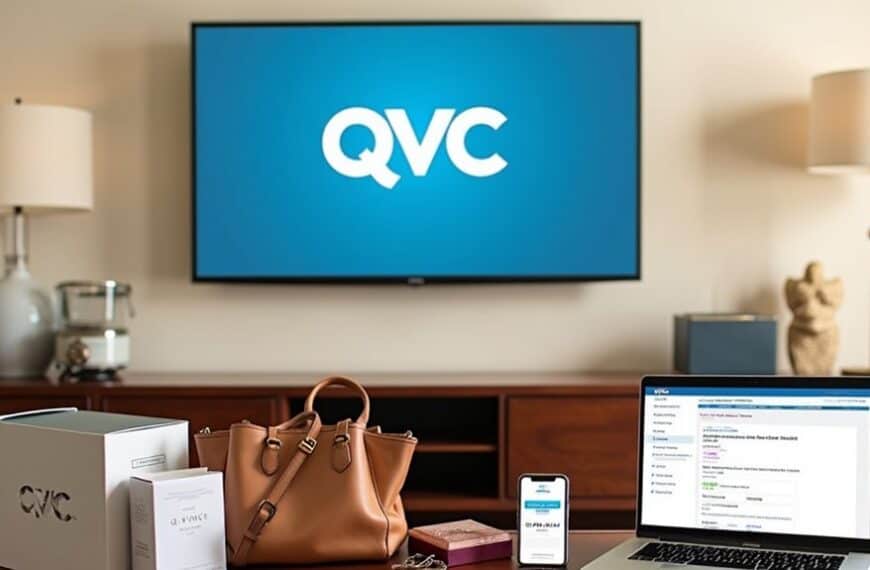Imagine a world where your home knows your preferences, anticipates your needs, and adapts to your lifestyle seamlessly. This futuristic vision of home automation is becoming a reality, thanks to the integration of cloud computing.
Cloud computing plays a pivotal role in transforming our houses into smart homes, where every device is interconnected and controlled remotely. But what exactly is the role of cloud computing in this technological revolution? How does it enable the automation and convenience we yearn for?
In this discussion, we will explore the various ways cloud computing empowers home automation, the benefits it brings, and the challenges that need to be addressed for a truly connected and efficient smart home ecosystem.
So, let's dive into the world of cloud-powered home automation and discover its incredible potential.
Key Takeaways
- Cloud computing in home automation offers scalability, allowing users to easily add or remove devices based on demand.
- It provides cost-effectiveness by eliminating the need for expensive hardware components.
- Cloud computing enables customization of home automation solutions to specific requirements.
- Enhanced security measures, such as real-time analytics, remote control, and encryption, protect data and devices in the home automation system.
Benefits of Cloud Computing in Home Automation
Cloud computing in home automation offers numerous benefits, including scalability, cost-effectiveness, flexibility, efficient data management, and enhanced security measures.
With the integration of cloud computing into home automation systems, you can easily scale your setup based on demand. This means that as your needs change or expand, you can effortlessly add or remove devices without the need for extensive hardware infrastructure. By utilizing cloud services, you can also achieve significant cost savings, as you no longer have to invest in expensive hardware components.
Furthermore, cloud platforms provide a high level of flexibility in customizing your home automation solution. They offer a wide range of services and tools that can be easily integrated into your system, giving you the freedom to tailor your setup to your specific requirements.
Additionally, cloud computing enables efficient data management for your IoT devices. You can store, backup, and retrieve data seamlessly, ensuring that your valuable information is easily accessible whenever you need it.
Moreover, cloud platforms provide robust security measures to protect your home automation data and devices. As smart homes become more prevalent, data security becomes increasingly important. Cloud computing offers advanced security features such as real-time analytics, remote control, and encryption, safeguarding your system from potential threats.
Challenges of Implementing Cloud Computing in Home Automation
When implementing cloud computing in home automation, you'll face several challenges.
Firstly, security concerns are a major consideration as you need to protect sensitive data stored in the cloud from cyber attacks and unauthorized access.
Secondly, data privacy is a significant issue, as a large amount of personal data is processed and stored in the cloud.
It's crucial to address these challenges to ensure the successful integration of cloud computing in home automation systems.
Security Concerns
One of the major challenges in implementing cloud computing in home automation is ensuring the security of the system. With the increasing prevalence of IoT devices and the integration of cloud solutions in homes, there are several security concerns that need to be addressed:
- Data privacy: Storing sensitive data in the cloud raises concerns about unauthorized access and data breaches.
- Device vulnerabilities: IoT devices connected to the cloud can become targets for hackers, potentially compromising the entire system.
- Cloud storage security: The security measures implemented by cloud service providers must be robust enough to protect against data loss or theft.
- Network security: The communication between devices and the cloud must be secure to prevent interception or tampering of data.
- User authentication: Implementing strong user authentication protocols is crucial to prevent unauthorized access to the system.
To ensure the security of cloud-based home automation systems, it's important to carefully select reliable cloud service providers, regularly update and patch IoT devices, and implement strong encryption and authentication mechanisms.
Data Privacy
Securing sensitive data in cloud-based home automation systems is a critical challenge due to the potential vulnerability of personal information. As more homes become smart homes, with interconnected IoT devices, the need for robust protection of data privacy increases.
The transmission and storage of data from these devices to remote servers in the cloud infrastructure require secure measures to prevent unauthorized access and breaches. Data privacy concerns arise from the potential exposure of personal information, such as daily routines, preferences, and even physical presence within the home.
To address these challenges, cloud platforms and services must implement stringent security protocols, encryption techniques, and access controls. Compliance with data protection regulations and standards is crucial to ensure the privacy and security of user information in home automation systems.
Integration of Cloud Computing in Security Systems
Cloud computing revolutionizes security systems by enhancing the storage, analysis, and real-time communication of security data, enabling proactive measures and scalable infrastructure without extensive hardware deployment.
Here are some key ways in which cloud computing is integrated into security systems:
- Enhanced Data Storage and Analysis: Cloud computing allows for the storage and analysis of security data generated by various IoT devices and sensors, providing a centralized and secure repository for valuable information.
- Real-time Communication and Visibility: Cloud-based security systems enable real-time communication and visibility, allowing for quick response to potential security threats and the ability to monitor and control security devices remotely.
- Scalable Infrastructure: With cloud integration, security systems can easily scale up or down based on the needs of the users, without the need for extensive hardware deployment. This flexibility allows for cost-effective and efficient implementation.
- Secure Device-to-Device Communication: Integration with cloud platforms enables secure device-to-device communication and interoperability, ensuring that security devices can seamlessly work together to provide comprehensive protection.
- Efficient Backup Solutions: Cloud services offer efficient backup solutions for security systems, including the use of digital twins for high availability. This ensures that even in the event of a failure, the security system remains operational and data remains protected.
Cloud Computing's Impact on Energy Efficiency in Home Automation
Cloud computing has a significant impact on energy efficiency in home automation.
By analyzing data generated by IoT devices, cloud computing enables energy savings through informed decision-making.
Additionally, remote control and monitoring capabilities provided by cloud computing allow users to optimize energy usage in real-time.
Furthermore, the integration of cloud computing with smart grids enhances energy efficiency by enabling better coordination and management of electricity consumption.
Energy Savings Through Data Analysis
Through data analysis facilitated by cloud computing, you can optimize energy efficiency in home automation, resulting in significant savings. By harnessing the power of cloud computing and the Internet of Things (IoT), you can make your home smarter and more energy-efficient. Here's how data analysis can help you save energy:
- Cloud platforms enable the integration and control of various IoT devices in your smart home ecosystem.
- Advanced analytics and machine learning algorithms analyze massive amounts of data in real-time to identify patterns and optimize energy usage.
Cloud-based home automation systems provide innovative solutions for monitoring and managing your home's energy consumption.
- Data analysis helps you understand your energy usage patterns and make informed decisions to reduce waste.
- By leveraging the power of cloud computing, you can achieve energy conservation and cost-effectiveness in your home automation setup.
Remote Control and Monitoring
You can remotely control and monitor your smart home devices for improved energy efficiency through the impact of cloud computing in home automation.
Cloud computing enables the seamless integration of IoT devices and cloud platforms, allowing for efficient storage, analysis, and management of data generated by these devices.
By leveraging cloud computing applications, you can access your smart applications from anywhere, at any time, using any device with an internet connection.
Cloud computing offers scalability, eliminating the need for extensive hardware infrastructure in your home automation system.
Additionally, cloud service providers ensure secure device-to-device communication and interoperability, enhancing the overall functionality and reliability of your smart home.
With cloud computing, you have access to abundant computing resources, enabling you to remotely control and monitor your smart devices, optimizing energy consumption and ultimately reducing your carbon footprint.
Enhanced Smart Grid Integration
Enhanced integration of smart grid systems with cloud computing revolutionizes energy efficiency in home automation. By leveraging cloud computing technologies, home automation systems can tap into the power of the smart grid to optimize energy usage and reduce costs.
Here are five key benefits of this enhanced integration:
- Efficient storage and analysis of energy data generated by smart grid systems.
- Seamless communication and high visibility between smart grid components, enhancing energy management.
- Remote monitoring and management of smart grid devices, reducing operational barriers.
- Minimized hardware deployment through cloud platforms.
- Cost-effective scaling of smart grid infrastructure using cloud resources.
With cloud computing, homeowners can harness the full potential of IoT solutions, edge solutions, and cloud storage to connect and control their devices in real time. This integration enables data analysis to uncover energy-saving opportunities and make informed decisions for a more sustainable and efficient home.
Enhancing Convenience and Control With Cloud-Based Home Automation
Cloud-based home automation systems revolutionize the way you manage and control your smart home, offering unparalleled convenience and accessibility. With cloud computing, you can easily access and manage your home automation system from anywhere, using any internet-connected device. This means that whether you're at work, on vacation, or simply in another room, you can control your smart devices and monitor your home's security with just a few taps on your smartphone or tablet.
The cloud-based infrastructure provides scalability, allowing you to expand and integrate new IoT devices into your smart home ecosystem effortlessly. It also offers data storage, backup, and security for all your connected devices, ensuring that your valuable data is protected and readily accessible when you need it.
Moreover, cloud platforms enable real-time data processing and analysis, allowing your smart applications to make intelligent decisions based on the vast amount of IoT data collected from your home. This means that your home automation system can learn your preferences and adapt to your needs, enhancing convenience and control.
The Future Potential of Cloud Computing in Home Automation
The potential for cloud computing to revolutionize home automation is vast and promising. With the rapid advancement of technology, cloud computing is set to play a crucial role in shaping the future of home automation.
Here are five ways in which cloud computing can transform the way we interact with our homes:
- Edge Solutions: Cloud computing enables the deployment of edge solutions, allowing for real-time processing and decision-making at the edge of the network, resulting in faster response times and improved efficiency.
- Smart Applications: Cloud-based smart applications can provide homeowners with seamless control over their home automation systems, allowing for personalized settings and scheduling, enhancing convenience and comfort.
- IoT Systems: Cloud computing can power Internet of Things (IoT) systems in the home, enabling the seamless integration of devices and appliances, creating a truly interconnected and intelligent home environment.
- Storage Services: With massive amounts of data generated by smart devices, cloud computing offers scalable and secure storage solutions, ensuring that valuable data is protected and easily accessible.
- Machine Learning: Cloud computing can enable machine learning algorithms to analyze and learn from the data collected by home automation systems, enabling predictive and adaptive capabilities that can enhance energy efficiency and optimize resource allocation.
The future potential of cloud computing in home automation is undeniable. As technology continues to evolve, cloud-based solutions will play a pivotal role in creating smarter, more efficient, and personalized homes.
Frequently Asked Questions
How Does Cloud Computing Support in Automation?
Cloud computing plays a crucial role in home automation. It supports automation by providing benefits such as cloud-based platforms, data security, scalability, integration with AI, voice control systems, cost-effectiveness, remote access, and control, and future trends in home automation.
How Cloud Computing Is Connected With Smart Homes?
Cloud computing is connected with smart homes through cloud security, storage, voice assistants, connectivity, analytics, updates, energy management, integration, and data backup. It plays a crucial role in optimizing and managing various aspects of home automation.
How the Cloud and Iot Together Work for Home Automation?
Cloud computing plays a crucial role in home automation by providing cloud security, data privacy, remote access, scalability options, cloud storage, real-time monitoring, integration with voice assistants, energy efficiency, and cost-effectiveness.
What Is the Role of the Cloud Computing?
Cloud computing plays a crucial role in home automation by providing benefits like remote monitoring, scalability, security, and data analytics. It enables integration with voice assistants and facilitates personalized automation through cloud-based machine learning. However, challenges exist in its implementation.
:How Does Artificial Intelligence Enhance Cloud Computing in Home Automation?
Artificial intelligence plays a crucial role in consumer technology, particularly in home automation. AI enhances cloud computing in this area by enabling smart devices to learn and adapt to user behavior. This enhances the overall efficiency and convenience of home automation systems, making them more user-friendly and personalized.
Conclusion
So, in conclusion, cloud computing plays a vital role in home automation by providing scalable, cost-effective, and secure infrastructure for managing IoT devices and data.
One interesting statistic to consider is that by 2022, it's estimated that there will be over 29 billion connected IoT devices worldwide, highlighting the immense potential and growth of cloud-based home automation.
With cloud computing, homeowners can enjoy enhanced convenience, control, and energy efficiency in their smart homes.





